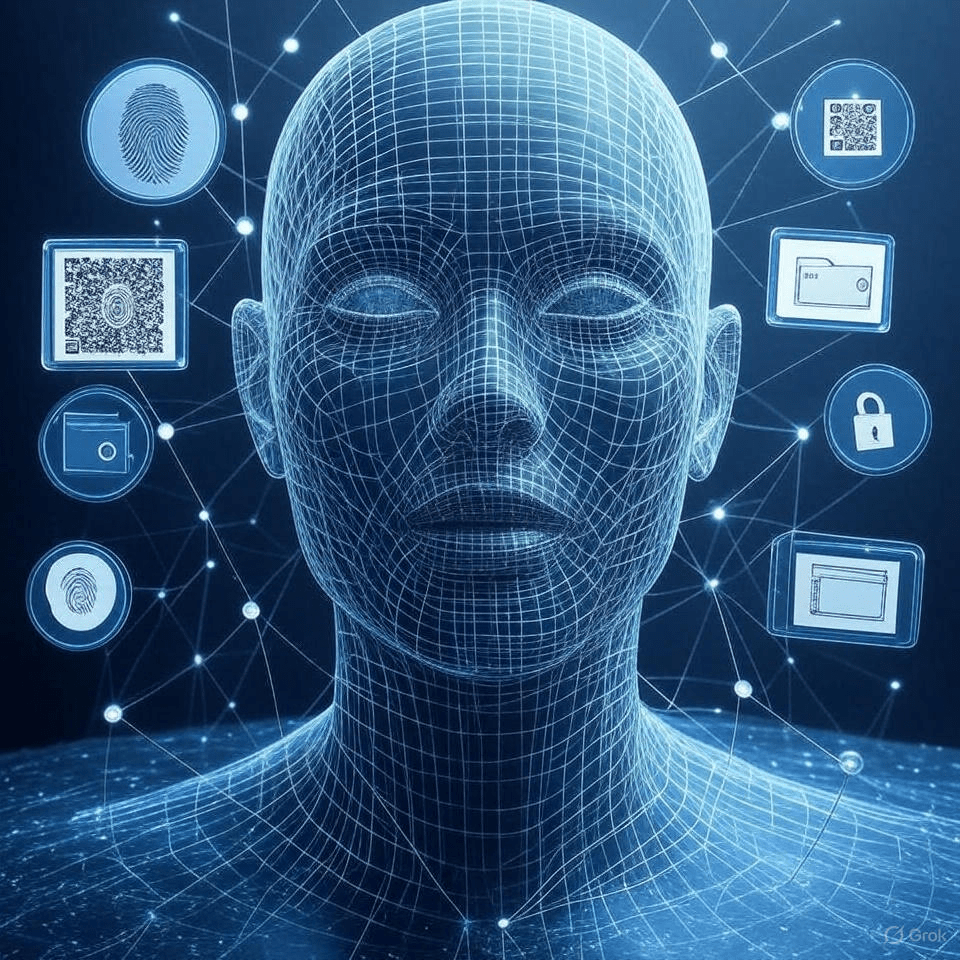In a world where our reliance on the internet is increasing, it has become essential to find a secure, flexible, and private way to prove identity. Traditional passwords, secret codes, and even physical ID cards are no longer sufficient. Hence, decentralized digital identity (DID) has emerged as a revolutionary solution.
*In this article, we learn about:
*What is decentralized digital identity?
*How does it work using blockchain?
*What is the difference between it and traditional digital identity?
*Pioneering projects in this field (with their digital currencies)
*How could it change our daily lives?
___________________
🔹 What is decentralized digital identity (DID)?
Decentralized digital identity is a way to prove your identity online without needing a third party (like a government or private company). You control your information, sharing only what you want, and with whom you want, without revealing everything about yourself.
Example: Instead of giving a site your full birth date, the system could only confirm that you are "over 18 years old" without mentioning the day or year.
🔹 How does decentralized identity work using blockchain?
Everyone receives a "unique identifier" (DID) stored on a blockchain network.
This identifier is linked to a digital wallet containing your "verified data" (Verifiable Credentials), such as: name, age, nationality, certificates...
When you need to prove something, you only send part of the information, which is verified automatically, without breaching privacy.
🔍 What is the difference between traditional and decentralized identity?
1. The responsible entity
Traditional identity is managed by governments or companies.
Decentralized identity is managed by the user themselves without intermediaries.
2. Privacy
Traditionally: Your data is exposed to the other party.
Decentralized: You control what you reveal, and to whom.
3. Control over information
In the traditional system: limited
In the decentralized system: complete
4. Traceability
Traditional identity can be easily traced.
Decentralization allows for a high degree of digital footprint concealment.
5. Geographic scope
Traditional identity operates within a specific country.
Decentralized identity works globally without restrictions.
🌐 Notable projects in the DID field (with their currencies):
1. Worldcoin – its currency: WLD
Aims to create a global digital identity using "iris scanning". Each user receives WLD as a reward when verifying their identity through a device called Orb.
2. Polygon ID – its currency: MATIC
Part of the Polygon ecosystem, relying on ZK Proofs technology to provide proofs without revealing data. The currency used within the platform is MATIC.
3. Civic – its currency: CVC
Civic offers identity verification solutions using blockchain, with the CVC token used as a means of interaction within the system, between users and companies.
4. Microsoft ION / Entra – without an independent digital currency
A project built on the Bitcoin network to provide decentralized identities, but it does not have its own unique token. It relies on Bitcoin's structure without creating a separate token.
💡 How does it affect us in daily life?
Accessing sites without passwords
Proving age or nationality without physical documents
Applying for jobs or opening accounts without centralization
Protection against identity theft and fraud
Using one identity across the entire internet
🛡️ Current challenges:
Slow adoption of the concept by governments and companies
Low user awareness about how to use DID
The necessity to simplify interfaces and make them suitable for non-tech users
💡Decentralized digital identity is not just a technological advancement, but a new philosophy that gives the user control over their identity and privacy. A day may come soon when your digital wallet serves as your ID card, and a key to every service on the internet.


